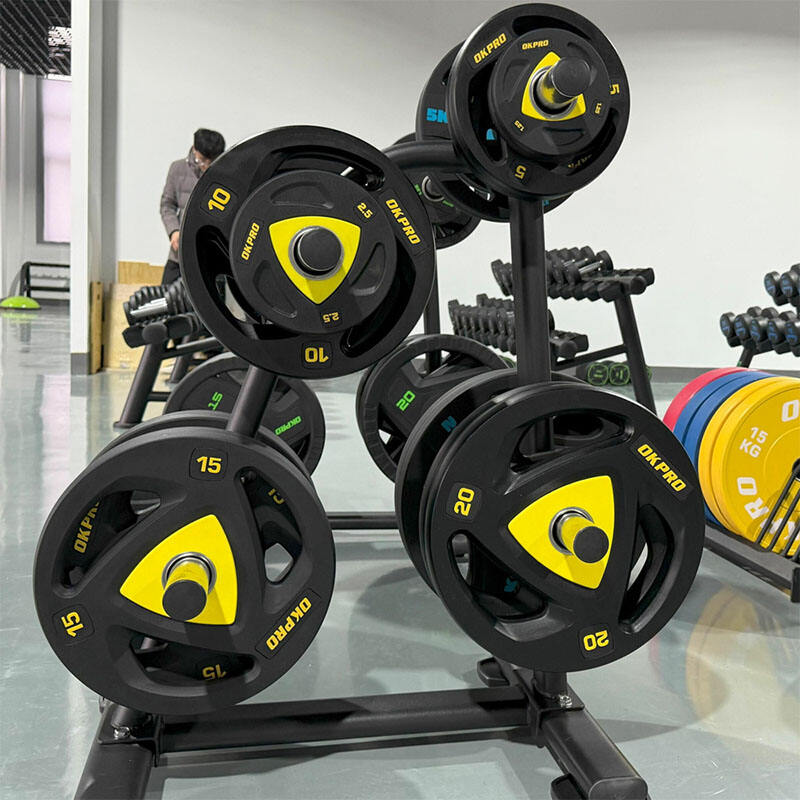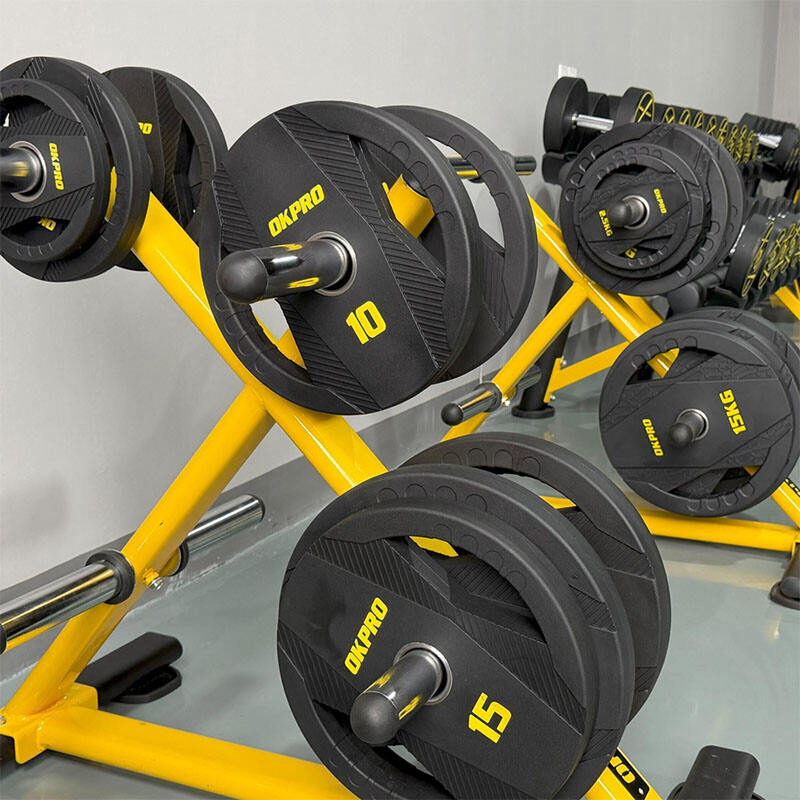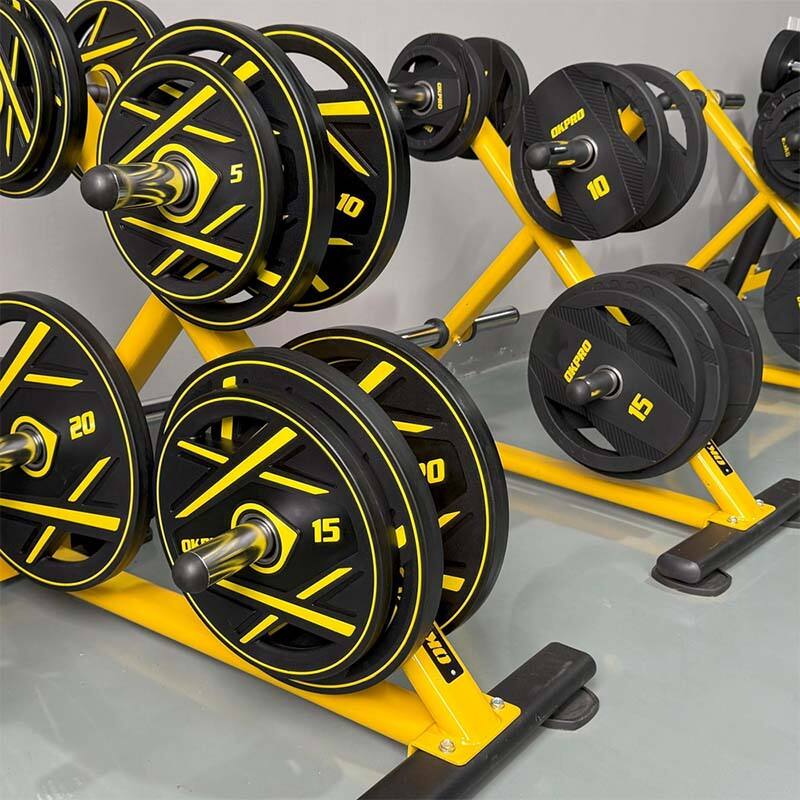In gyms, training flexibility refers to the ability to shift the intensity of a workout, adjust toward different training goals, and cater to users of different needs. Core equipment which includes weight plates directly impacts this flexibility. Without flexible weight plates, gyms will struggle in trying to provide different training programs. For instance, beginner users may find the equipment too heavy, while advanced users may not have enough options to increase the intensity. You can find high-quality plates to help your training flexibility at https://www.oksporting.com/. It lays the foundation for flexible and versatile training, catering to different fitness levels and goals.
The most common weight plates are the most used in training and provide the most range in flexibility. For example, weight plates can go from light plates, which are 1kg and 2.5kg, to heavy plates, which are 20kg and 25kg. Beginners, or users who focus on endurance, can use the light weight plates (1kg, 2.5kg) for the barbell or dumbbell to help start low and gradually build up. Advanced users can also use the heavy weight plates to help them reach the intensity they are aiming for.

Also, gyms can combine different weight plates to achieve specific intensity increases. For example, adding a 2.5 kg weight plate to a 5 kg plate on a barbell creates a 7.5 kg increase. With fixed-weight gym equipment, this adjustability doesn’t exist, making weight plates crucial for adaptable intensity. The weight plate products on https://www.oksporting.com/ cover various weights, ensuring gyms have sufficient options for intensity customization.
Training adaptability is further enhanced with the versatile use of weight plates across various fitness equipment. Unlike equipment-specific weights, standard weight plates can be utilized with combination barbells, dumbbells, weight benches, and cable machines. For example, barbell squats, deadlifts, and bench presses can be performed using weight plates, dumbbell handles can be transformed into adjustable plates for arm curls and shoulder presses, and plates can be added to weight bench racks for progressive overload during chest workouts. One set of plates can replace several fixed-weight tools, saving space and increasing exercise variety. The weight plates from https://www.oksporting.com/ are designed with standard hole sizes (Olympic 50mm, standard 30mm) to fit the most common gym equipment, providing seamless integration and maximum training adaptability.
Adjustable Training Programs Enabled by Weight Plates
Having weight plates offers gyms opportunities to develop adjustable training programs that cater to various customer needs during workout cycles. An example would be a 4-week strength-building program where participants begin with 10kg weight plates and move up to 12.5kg in the second week, then keep adding 2.5kg each week until they reach their maximum for the final week. For a fat-loss program, trainers can promote the use lighter weight plates, for example 5kg, and assist users through high-rep sets to raise heart rate and keep muscle engaged. Weights also promote functional training. Weights can be used with kettlebells or medicine balls as their primary resistance. Instructors can use the plates for dynamic exercises such as lunges or woodchops. Weights wonderfully promote varied training as the users goals or training needs change. The durable weight plates from https://www.oksporting.com/ can go through constant changes in flexing their long-term program adaptability.
Meeting Diverse User Needs with Weight Plates
Gyms cater to users of varying age, level of fitness, and weight and the diversity of the users can be seamlessly met by weight plates. Elderly or injured users can complete gentle strength training to improve mobility with ultra-light weight plates, such as 0.5kg or 1kg.

New players in fitness training often use light 2.5kg plate weights to master form and avoid injuries. In contrast, professional athletes can lift and stack numerous 20kg plates and other heavy plates to push their limits. Weight plates can also cater to specific user goals; for example, bodybuilders can target specific combinations to help isolate and work different muscle groups. Cross-training enthusiasts can also use and adjust plates for mixed workouts like WODs (Workouts of the Day). The different varieties of plates available at https://www.oksporting.com/ help ensure gyms cater to training flexibility for every user.
Maximizing Flexibility By Choosing the Right Weight Plates from https://www.oksporting.com/
For training flexibility, it is critical for gyms to pick appropriate weight plates from https://www.oksporting.com/. Start by selecting plates across the entire weight continuum; complete the range with light plates (1kg, 2.5kg), medium (5kg, 10kg), and heavy (15kg, 20kg, 25kg) so that all fitness levels are accommodated. Next, consider compatibility: choose plates with standard holes that fit the gym's existing barbells, dumbells, and racks. Then, consider the material for durability: rubber or urethane plates are higher-cost options that provide shock- and noise- resistance, making them good for busy gyms. Cast-iron plates are another low-cost option that provides durability which may work for more budget-conscious facilities. Finally, consider safety features, like anti-slip surfaces or clearly labeled weights.
Ultimately, check with the site’s professionals or look at customer comments to make sure the weight plates fit particular requirements for the gym, such as frequent use or outdoor workouts. Choosing the most appropriate weight plates enables gyms to maximize their training versatility and appeal to a wider customer base.

